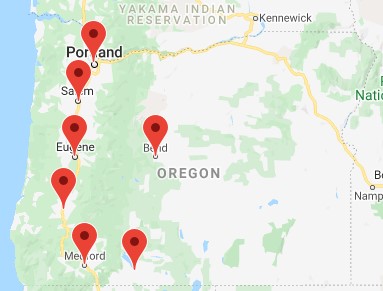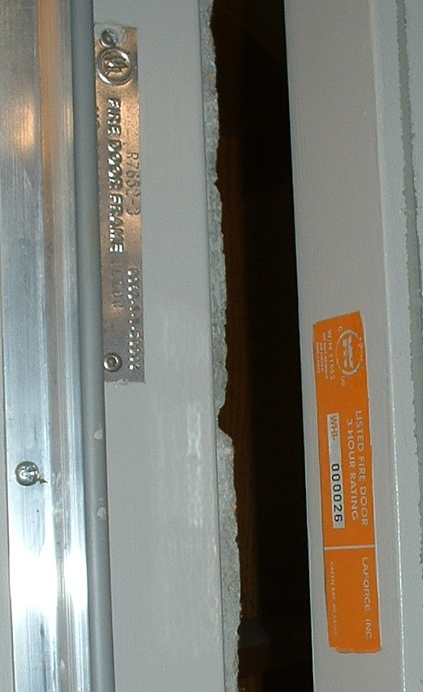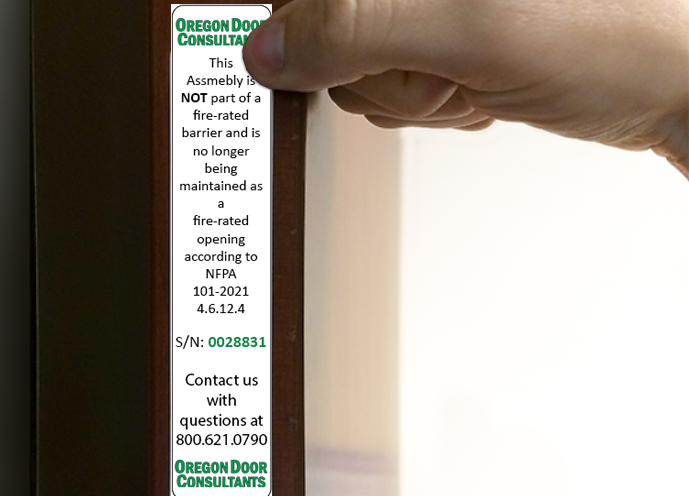Within the last decade, there has been a steady increase nationally for the enforcement of annual fire door assembly inspections. This has brought to light a new focus as it relates to the condition of existing fire doors. We have received many questions about the interpretation around the codes and standards. Decommissioning fire rated doors is challenging with the absence of prescriptive code language. This leaves the interpretations up to the Authority Having Jurisdiction (AHJ), and this sometimes leads to inconsistent enforcement.
An approval for a change to the 2021 edition of NFPA 101 – Life Safety Code. This will help to clarify an issue that has been a source of confusion. The challenges plaguing hospitals and other healthcare. If a fire rated door is installed in a location where a fire door is not required, must the assembly be maintained and inspected according to the requirements of NFPA 80 – Standard for Fire Doors and Other Opening Protectives?
NFPA Code Revision – Fire Door Assemblies

Here is a link to the NFPA Code Revision Roundup. In this link it references. “Another change that could have a significant impact on health care and other occupancies is a proposed revision that would eliminate the inspection, testing, and maintenance requirements for extraneous fire doors that aren’t required by code. Those fire doors would now be treated as regular doors, resulting in time and cost savings for facilities.”
We see it all the time where a labeled fire door is installed where it does not need to be. In many facilities we work to get these erroneous fire rated doors and frames decommissioned.
If you need your Fire Door and Frames decommissioned we can help! This is a lengthy process. We work with you to make sure that your current fire and life safety plans clearly preclude the door from the NFPA 80 requirements. Once we establish this criterion, we will work with your local AHJ’s to get their approval to decommission. Once that happens, we will then affix a decommissioning label over the existing fire label. The good news about these labels is that we affix them over the top of the existing label. If at a later date the door becomes in a fire/smoke separation wall it will be easy enough for us to remove the label and include it back in the annual inspection
If a door assembly must be maintained and inspected per NFPA 80 just because the door has a label on it, this has resulted in expensive and unnecessary work which has no impact on life safety. What is the point of having a code-compliant fire door assembly in a wall that will provide little resistance to the spread of fire?
Find your local fire door inspector

Intent of NFPA 101 for labeled Fire Door Assemblies

In the Northwest, state do not recognize NFPA 101 Life Safety Code however, it plays a role in how NFPA 80 is written. NFPA 101 mandates the minimum fire ratings for opening protectives in fire-resistance-rated walls. If a fire door is installed where a rating is not needed, NFPA 101 does not mandate that the door, frame, and hardware must meet all of the requirements of a fire door assembly.
A label is not required by NFPA 101 to be removed if the assembly is in a location where a fire door is not required, although removing an unneeded label is not prohibited by the code. It may be advantageous to remove extraneous labels to avoid confusion during an inspection. For example, if an AHJ sees a labeled fire door without a door closer. He or she may initially believe that the door is a fire door assembly that is not self-closing; this would be a deficiency. The hospital engineer would then have to prove that the rating is not a requirement.
Fire Door Assemblies – AHJ Interpretation
Questions about extraneous labels have been caused by a section of NFPA 101 which states that:
“Existing life safety features obvious to the public, if not required by the Code, shall be either maintain or remove.”
The motivation behind this is if a building occupant sees a life safety feature and assumes that it is functional, they might make decisions based on that assumption. NFPA 101 requires the system to either maintain or remove, so that life-or-death decisions are not based on bad assumptions.
The big debate has been whether a label on a fire door or frame is something that would be “obvious to the public”, and whether it might cause someone to assume that they would be protected by the fire door during a fire. If the door was labeled but was not fully compliant with NFPA 80, the building occupant would not have the expected protection provided by a complete and code-compliant fire door assembly in a wall that meets the requirements for a fire barrier. The door might have a label, but perhaps it is not self-closing or self-latching, or does not have the proper glazing, or the wall does not offer the same level of fire protection shown on the door label.

Fire Door Assembly 2021 Clarification
A new paragraph has been approved for inclusion in the 2021 edition of NFPA 101. It further clarifies the intent of the code:
“4.6.12.4. Where a door or door frame that is not required to be fire protection-rated is equipped with a fire protection listing label, the door and the door frame shall not be required to meet NFPA 80.”
The problem statement submitted as part of the code development process referenced the 2015 change to Annex A. Although that change was intended to clarify this requirement, fire door interpretations were still inconsistent. Facilities were being cited by AHJs for non-compliant fire door assemblies; even when those assemblies were installed in locations where a fire rating was not required. Some AHJs were interpreting fire doors and frames as being life safety features that were obvious to the public.
The paragraph that has been approved for the 2021 edition of NFPA 101 is very clear. If a door or frame has a label and is installed where a rated opening protective is not required, the requirements of NFPA 80 do not apply. Although a code change does not technically take effect until that edition of the code is adopted. This change is more of a clarification and hopefully, it will begin to affect AHJ interpretations immediately.
The new code language makes it clear that extraneous labels can remain, without prompting additional requirements. NFPA 101′s intent is that only required openings indicated on your life safety drawings must be maintained in NFPA 80. They must be inspected annually. As always, the AHJ has the final say and should be consulted for their interpretation of the adopted codes. Let us fight the fight for you. We have the relationships with the AHJ’s to streamline the process.

